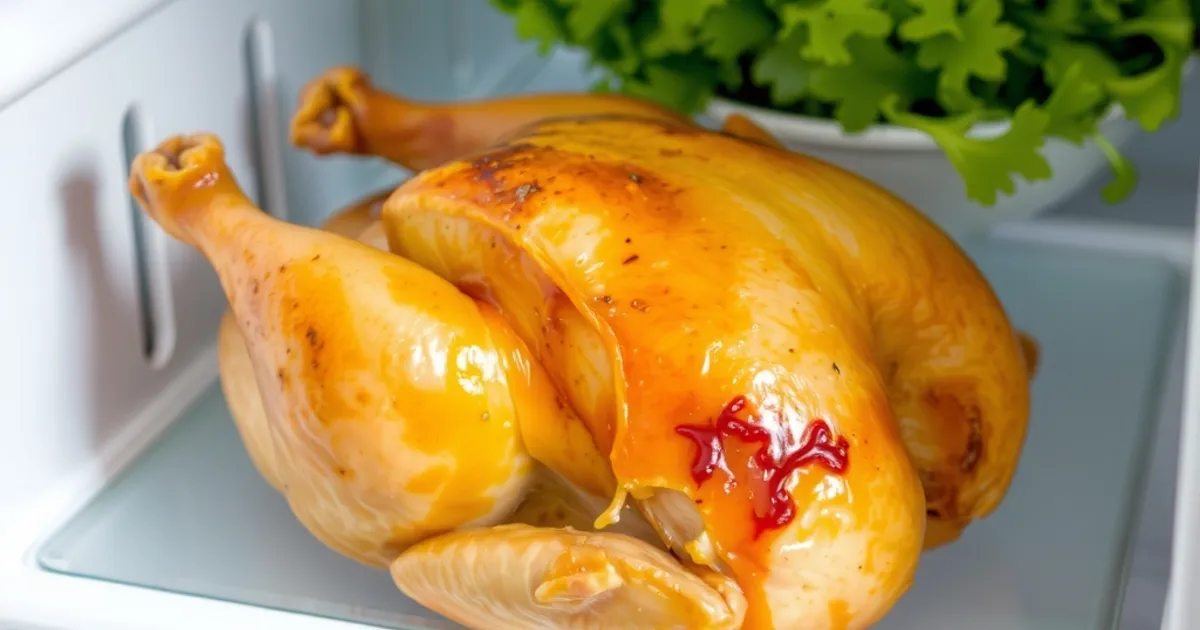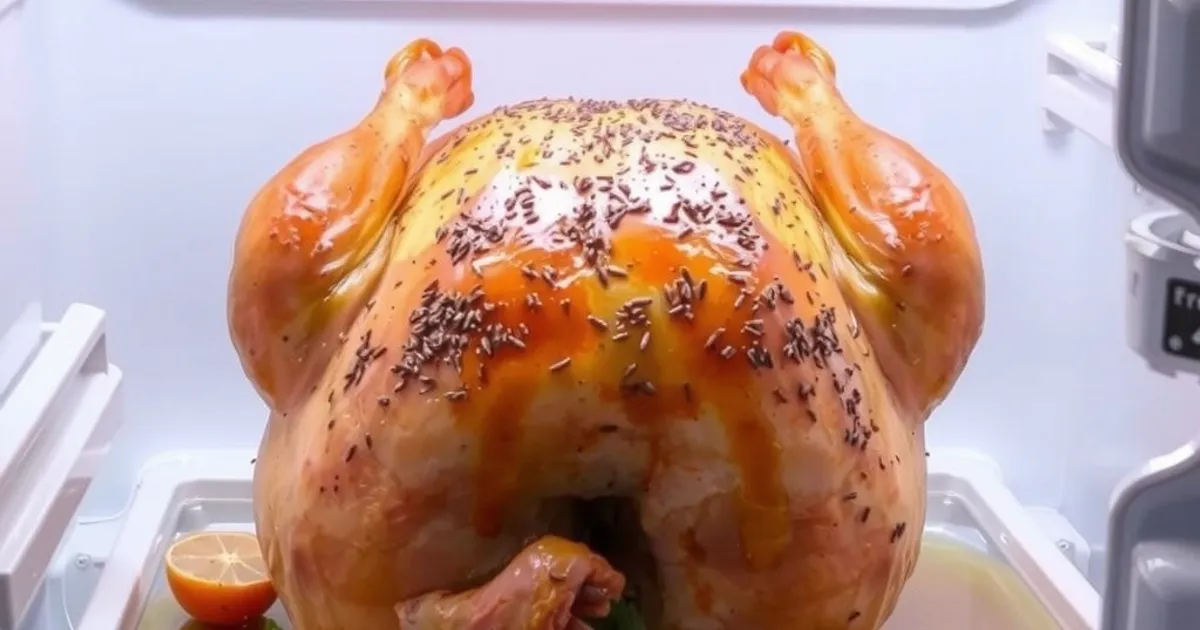Essential Guide: How Long is Rotisserie Chicken Good for in the Fridge?
Hey, I’m Val—short for Valentina Cortez—and this is my site, conrecipes.con. I’m just a regular gal who loves food way too much and figured, why not share that with the world? This isn’t some fancy chef blog—it’s me, my kitchen, and a bunch of recipes I’ve messed around with until they taste damn good. I’m all about keeping it real and having fun while we’re at it.
I grew up in a house where the kitchen was always loud—pots clanging, family arguing over who got the last bite, that kind of thing. My grandma was the queen of comfort food, and she’d have me rolling out dough before I could even reach the counter. I’ve been hooked ever since. In my 20s, I bounced around—Mexico, Italy, Thailand—eating everything I could and scribbling down ideas on whatever was handy. One time, I spilled lime zest into some cornbread batter by accident, and it turned out so good I still make it. That’s me in a nutshell: happy mistakes and all.
I started conrecipes.con because I was tired of seeing people scared of cooking. I’m no pro—just someone who’s burned enough pans to know what works. I want you to feel like you can do this too, no stress.
It’s a play on words, I guess. Con-fidence to try stuff, con-viction that food should taste awesome, and maybe a little con to sneak some flavor into your day. Like, I’ve got a lasagna recipe that’ll trick your kids into eating spinach—they’ll never know. It’s the good kind of sneaky.
When I’m not cooking, I’m usually digging through thrift stores for old cookbooks—those stained, dog-eared ones are the best. I’ve got a jar of kimchi fermenting on my counter that my neighbors swear by, and yeah, I daydream about being on TV, making some celebrity eat my weirdest dishes. It’s a long shot, but whatever.
This site’s my way of saying, “Hey, come hang out and cook something with me.” I write these recipes like I’d tell them to a friend—nothing fussy, just what works. If you’ve got a twist on one or a total flop to share, hit me up in the comments. I love hearing what you’re up to.
So yeah, that’s me. Grab a spoon, turn on some music, and let’s make something tasty. No pressure—just good eats.
So, you grabbed a delicious rotisserie chicken from the store, and now you’re wondering, How Long is Rotisserie Chicken Good for in the Fridge? Well, you’re in the right place! I’ll walk you through everything you need to know to keep your chicken safe and tasty.
Take care,
Val
The Golden Rule: 2-4 Days
Generally speaking, cooked rotisserie chicken is safe to eat for 3 to 4 days when stored properly in the refrigerator. However, keep in mind that this is a general guideline. Factors such as the temperature of your fridge and how quickly you refrigerated the chicken after purchasing it play significant roles. Therefore, always use your best judgment. When in doubt, throw it out!
According to the USDA, it’s vital to refrigerate perishable foods like cooked chicken within two hours. After that, bacteria can start to grow rapidly. So, remember to cool that chicken down quickly! You can even speed up the cooling process by cutting the chicken into smaller pieces.
Also, proper storage is key. Store your chicken in an airtight container or wrap it tightly in plastic wrap. This prevents it from drying out and also minimizes the risk of contamination. Nobody wants dry, flavorless, or, worse, spoiled chicken!
Spotting Spoilage: Signs to Watch For
Even if your rotisserie chicken has been in the fridge for less than four days, it is still important to check for signs of spoilage. These signs can help you avoid foodborne illnesses.
First, give it a sniff. Does it have an unpleasant or sour odor? That’s a big red flag. Next, check the texture. Is it slimy or sticky? That’s another bad sign. Moreover, look for any discoloration. If the chicken is turning gray or green, it’s definitely time to say goodbye.
Always err on the side of caution. It’s not worth risking your health over a questionable piece of chicken. Furthermore, if you’re unsure, you should discard the chicken. You can find more detailed safety information on the Food Safety and Inspection Service (FSIS) website. They have extensive resources on poultry and food safety.

Reheating Rotisserie Chicken Safely
So, you’ve determined your rotisserie chicken is still good to eat. Now, how do you reheat it safely? Reheating food properly is crucial to killing any lingering bacteria.
First, make sure the chicken reaches an internal temperature of 165°F (74°C). Use a food thermometer to check. You can reheat rotisserie chicken in the oven, microwave, or even on the stovetop. Each method has its pros and cons.
If you are using the oven, preheat it to 350°F (175°C). Wrap the chicken in foil to keep it moist and bake for about 20-25 minutes, or until heated through. The microwave is faster, but be sure to use a microwave-safe dish and heat in short intervals to prevent drying it out. If you want to use the stovetop, shred the chicken and heat it in a pan with a little broth or sauce. You can also check out my guide on how to reheat rotisserie chicken for detailed instructions.
Remember, it’s also important to handle leftovers properly. According to the USDA, you should avoid leaving food at room temperature for more than two hours. This is especially important if the ambient temperature is above 90°F (32°C), like during a summer picnic.
Creative Ways to Use Leftover Chicken
Got leftover rotisserie chicken? Don’t let it go to waste! There are endless ways to use it in delicious and easy meals. You can shred it and add it to salads, soups, or sandwiches.
Also, consider making chicken tacos or quesadillas. It’s a quick and tasty way to use up leftover chicken. Add some salsa, cheese, and your favorite toppings. Moreover, chicken salad is another fantastic option. Check out my healthy chicken salad recipes for inspiration!
Furthermore, use it in casseroles or pasta dishes. Chicken Alfredo, anyone? Finally, you can even freeze leftover chicken for later use. Just make sure to store it in an airtight container. Freezing extends the life of the chicken significantly.
Remember, food safety is paramount. Understanding the risks of food poisoning will help you handle leftovers responsibly and keep your family safe.
So, next time you grab a rotisserie chicken, remember these tips. Enjoy your meal, and stay safe!
Frequently Asked Questions
- Can I freeze rotisserie chicken to make it last longer?Yes, you can freeze rotisserie chicken. First, remove the meat from the bones. Then, store it in an airtight container or freezer bag. It can last for up to 2-3 months in the freezer. When thawing, do so in the refrigerator to maintain food safety.
- How can I tell if rotisserie chicken has gone bad, even if it’s only been in the fridge for a day?Trust your senses! If the chicken has a sour or off odor, a slimy texture, or any visible mold, it has likely spoiled. Also, discoloration is a sign that the chicken should be discarded.
- Is it safe to eat rotisserie chicken that has been left out at room temperature for more than two hours?No, it is not safe. Bacteria can grow rapidly at room temperature. Therefore, you should discard any rotisserie chicken that has been left out for more than two hours.
- What is the best way to store rotisserie chicken in the fridge?Store rotisserie chicken in an airtight container or tightly wrapped in plastic wrap. This will prevent it from drying out and minimize the risk of contamination. Place it on a shelf in your refrigerator where the temperature is consistently cold, ideally below 40°F (4°C).
- Can I eat rotisserie chicken cold after it has been refrigerated?Yes, you can eat rotisserie chicken cold, as long as it has been stored properly and is within the safe consumption window of 3-4 days. Just make sure to check for any signs of spoilage before consuming it.

